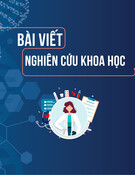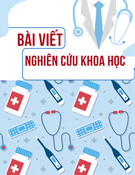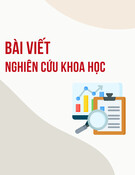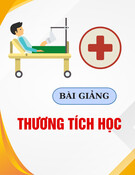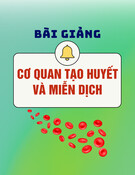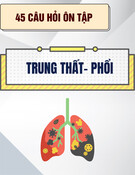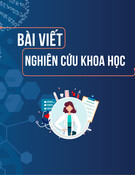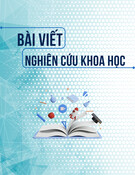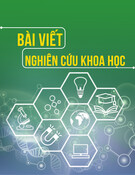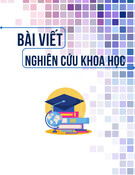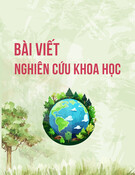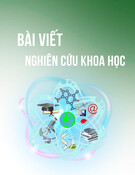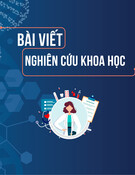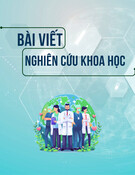
A survey on the consumer knowledge of organic cosmecs at Can Tho City in 2022-2023 Ly Dang Khoa, Mac Thien Phu, La Nu Kieu Nguyen, Tran Thi Tuyet Nhi, Nguyen Huynh Thanh Uy and Nguyen Phuc Hung*Can Tho University of Medicine and Pharmacy, VietnamABSTRACTBackground: The organic cosmecs market in Vietnam has been developing for a long me. However, to have a more objecve view of the organic cosmecs market, a comprehensive understanding of the market for organic cosmecs is necessary to provide development direcons that are genuinely correct, unfortunely there isn't much research to support it. Therefore, studying the knowledge of organic cosmec consumers will aid in the advancement of both intellectual and economic domains. Objecves: The purpose of study is to assess knowledge about organic cosmecs of consumers in Can Tho City. Materials and methods: The present study used a cross-seconal descripve method, based on using a cross-seconal descripve design, interviewing 559 organic cosmecs consumers in Can Tho City using a set of interview quesons to assess consumers' knowledge of organic cosmecs. Results: The majority of consumers aged 18 to 25 (72.1%) are interested in and use organic cosmec products more than other ages. Women consumers was found with higher proporon (70.7%) than men consumer (29.3%). Most consumers have average or higher knowledge with a proporon of (61.4%). The study also found that medical staff have beer knowledge about organic cosmecs than other groups. Conclusions: The results of the study have shown that the majority of people have good knowledge, but there are many who are not. However, whether or not this knowledge status is connected to the intenon to purchase organic cosmecs requires further research.Keywords: organic cosmecs, knowledge, consumers, Can ThoNowadays, health issues are becoming one of the top concerns of consumers when buying products, especially when it comes to cosmecs. In parcular, the demand for herbal cosmecs is increasing rapidly because they have less side effects, are friendly, safe to use, etc. To sasfy all of those requirements, organic cosmecs stand out among their competors. There are various cerficaons and requirements for organic cosmecs depending on the naon. USDA regulates the term “organic” as it applies to agricultural products through its Naonal Organic Program (NOP) regulaon, 7 CFR Part 205. If a cosmec, body care product, or personal care product contains or is made up of agricultural ingredients, and can meet the USDA/NOP organic producon, handling, processing and labeling standards, it may be eligible to be cerfied under the NOP regulaons. Understanding consumer perspecves on environmentally friendly products is important. Research on this topic is oen carried out in developed countries. Consumer concerns about the environment are expected to increase as consumer behavior increasingly moves towards environmentally friendly goods and services as well as consumers shi their purchasing behavior towards organic product [1]. Consumers' understanding of environmentally friendly products is starng to influence the purchasing decision-making process [2-4]. In addion to the product, packaging that is eco-friendly or reusable, ozone-free, organic, and pescide-free helps consumers choose products that can improve their overall health [5]. Evidently, a strategy needs to take advantage of a lot of different things in order 11Hong Bang Internaonal University Journal of ScienceISSN: 2615 - 9686 DOI: hps://doi.org/10.59294/HIUJS.VOL.5.2023.544Hong Bang Internaonal University Journal of Science - Vol.5 - 12/2023: 11-18Corresponding author: Nguyen Phuc HungEmail: nphung@ctump.edu.vn1. INTRODUCTION





